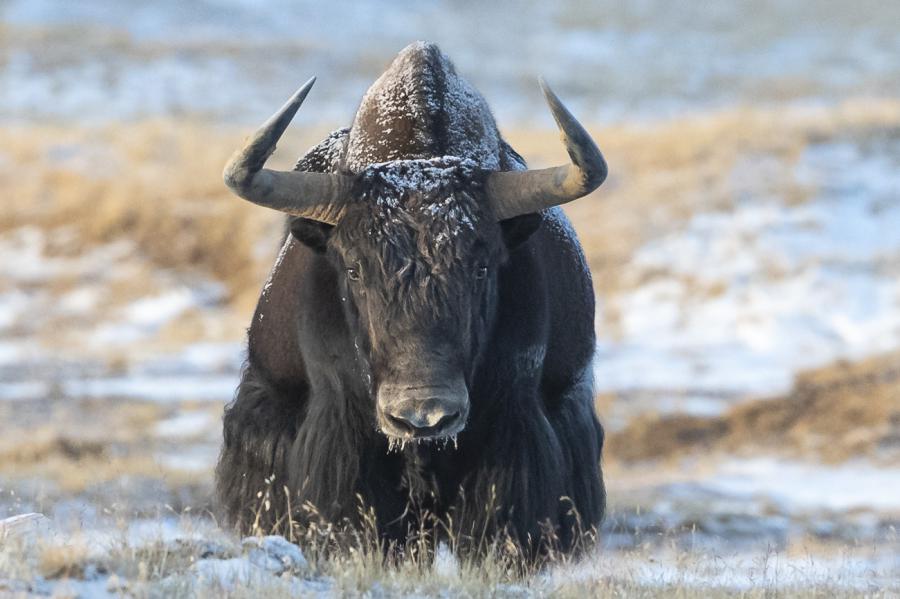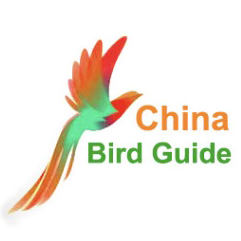
12 Days Qinghai Mammal Photographing Tour
Locations: Xining--- Qinghai Lake---Dulan Reserve---Yushu---Qumalai---Kekexili Reserve ---Golmud---Xining
Target Mammal Species:
Snow Leopard, Pallas’ Cat, White-lipped Deer, Wild Yak, Tibetan Antelope, Tibetan Gazelle, Tibetan Argali, Tibetan Fox, Przewalski’s Gazelle, Kiang, Wolf, Lynx, Blue Sheep, (Himalayan Marmot and Brown Bear in hibernation in winter.)
Bird Species we may to see in this season:
Black-necked Crane, Himalayan Griffon, Cinareous vulture,Upland Buzzard, Saker Falcon, Great-necklaced Chukar, Tibetan Partridge, Large-billed Crow, Red-billed and Yellow-billed Crow, Hume’s Ground Pecker, White-rumped Snowfinch, Rufous-necked Snowfinches and some widely spread waterfowls
Accommodation: From comfortable in the big town to poor in the wild.
Weather condition: the temperature can reach to 10℃ when the sun rise, and it will drop to -20℃ at night. And it is ver
Elevation: Starts from 2200M in Xining, and highest mountain passes can reach to 5000m. Most of the days will stay above 3500M, most of people should feel the elevation in the first few days. Please ask your doctor for advice before travel.
Best seasons:From Oct to Dec
Rut seasons:
|
Species: |
Mar |
April |
May |
Jun |
Jul |
Aug |
Sept |
Oct |
Nov |
Dec |
Jan |
Feb |
|
White-lipped Deer |
|
|
|
|
|
|
|
* |
* |
|
|
|
|
Wild Yak |
|
|
|
|
|
|
* |
* |
* |
|
|
|
|
Tibetan Antelope |
|
|
|
|
|
|
|
|
* |
* |
|
|
|
Tibetan Gazelle |
|
|
|
|
|
|
|
|
|
* |
* |
|
|
Tibetan Argali |
|
|
|
|
|
|
|
|
|
* |
* |
|
|
Przewalski’s Gazelle |
|
|
|
|
|
|
|
|
* |
* |
|
|
|
Kiang |
|
|
|
|
|
* |
* |
|
|
|
|
|
Brief Itinerary:
Day 1, Arrive in Xining airport. Then drive to Dulan Reserve
Day 2, Dulan Reserve
Day 3, Dulan Reserve
Day 4, Dulan Reserve
Day 5, Dulan Reserve
Day 6, Dulan Reserve
Day 7, Dulan Reserve
Day 8, Dulan to Yushu (Long driving)
Day 9, Yushu to Budongquan(Long driving, basic accommodation)
Day 10, Budongquan
Day 11, Budongquan
Day 12, Budongquan to Golmud airport. Evening flight departure via Xining
About Qinghai-Tibetan Plateau:
The Tibetan Plateau is surrounded by massive mountain ranges. The plateau is bordered to the south by the inner Himalayan range, to the north by the Kunlun Range which separates it from the Tarim Basin, and to the northeast by the Qilian Range which separates the plateau from the Hexi Corridor and Gobi Desert. To the east and southeast the plateau gives way to the forested gorge and ridge geography of the mountainous headwaters of the Salween, Mekong, and Yangtze rivers in western Sichuan (the Hengduan Mountains) and southwest Qinghai. In the west the curve of the rugged Karakoram range of northern Kashmir embraces it.
Buddhist stupa and houses outside the town of Aba, on the Tibetan Plateau.
The Tibetan Plateau is bounded on the north by a broad escarpment where the altitude drops from around 5,000 metres (16,000 ft) to 1,500 metres (4,900 ft) in less than 150 kilometres (93 mi). Along the escarpment is a range of mountains. In the west the Kunlun Mountains separate the plateau from the Tarim Basin. About half way across the Tarim the bounding range becomes the Altyn-Tagh and the Kunluns, by convention, continue somewhat to the south. In the 'V' formed by this split is the western part of the Qaidam Basin. The Altyn-Tagh ends near the Dangjin pass on the Dunhuang-Golmud road. To the west are short ranges called the Danghe, Yema, Shule and Tulai Nanshans. The easternmost range is the Qilian Mountains. The line of mountains continues east of the plateau as the Qin Mountains which separate the Ordos Region from Sichuan. North of the mountains runs the Gansu or Hexi Corridor which was the main silk-road route from China proper to the west.
The plateau is a high-altitude arid steppe interspersed with mountain ranges and large brackish lakes. Annual precipitation ranges from 100 to 300 millimetres (3.9 to 11.8 in) and falls mainly as hailstorms. The southern and eastern edges of the steppe have grasslands which can sustainably support populations of nomadic herdsmen, although frost occurs for six months of the year. Permafrost occurs over extensive parts of the plateau. Proceeding to the north and northwest, the plateau becomes progressively higher, colder and drier, until reaching the remote Changthang region in the northwestern part of the plateau. Here the average altitude exceeds 5,000 metres (16,000 ft) and winter temperatures can drop to −40 °C (−40 °F). As a result of this extremely inhospitable environment, the Changthang region (together with the adjoining Kekexili region) is the least populous region in Asia, and the third least populous area in the world after Antarctica and northern Greenland.
Day 1 Your arrival in Xining airport
We’ll meet you at Xining Airport (2200M),
Driving directly to Xiangride town in Dulan(3000M), comfortable hotel.
Day 2 to Day 7 Full days in the Dulan Reserve.
Today we’ll drive into the Dulan Reserve, our most important target here will be the Snow Leopard, according to the statistics by the local NGO, the chance to SEE the snow leopard here are 80% in 4 days. To PHOTOGRAPH them in a close range, we do need some good luck. Here in this valley, we’ll have local Tibetan Yak family as our host as well as our guide, they of course know every part of this valley and where are the hot spots to witness the snow leopard. The accommodation can be extremely basic as we live in the ranger station, and there’s no other option available nearby. But it is very meaningful to support the local community by tourism, meanwhile that’s also a sustainable way to protect the local wildlife.
The other mammals we may see here are: Pallas’s cat, Tibetan Fox, Wolf, Lynx, Blue Sheep, Red Deer
Birds you may see here: Beard Vulture, Himalayan Griffon, Rufous-breasted Accentor, Robin Accentor, White-rumpted Snowfinch, White-winged Redstar, Blue-fronted Redstar, White-browed Tit-warbler, etc
Overnight in the Tibetan host family rooms.
Day 8 Dulan to Yushu
Long drive from Dulan to Yushu for overnight. (570km Highway 9 hrs)
Overnight in Yushu(3700m), comfortable hotel.
Day 9 Yushu to Budongquan
Driving day from Yushu to Budongquan(4600M 540KM). Today we hope to see Tibetan fox, Red Fox,Wolf, White-lipped Deers, Agarli, Wolves, wild Yak, Tibetan Antelopes, Tibetan Gazelles, Tibetan Brown Bear, Kiangs, and Pallas’s Cat while driving, not much time for searching and photographing though.
Overnight in Budongquan, basic hotel.
Day 10-11 Full days in Budongquan
Photograhing the Wild Yak, Tibetan Antelopes, Tibetan Gazelles, Kiangs
Day 12 Budongquan to Golmud
Morning exploring in Budongquan, then head to Golmud airport (200km 3 hrs) for evening departure


